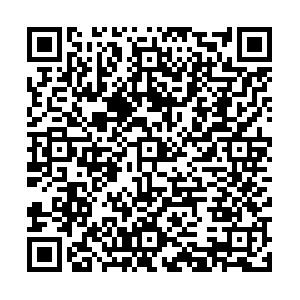Application of ARIMA model and auto-regressive model in prediction on incidence of hand-foot-mouth disease
-
摘要: 目的 探讨求和自回归滑动平均混合模型(autoregressive integrated moving average model,ARIMA)和残差自回归模型在我国手足口病月发病率预测中的应用,并对它们的预测效果进行比较。方法 收集2008年1月~2014年12月我国手足口病月发病率资料,用SPSS 13.0和EViews 8.0分别拟合ARIMA模型和残差自回归模型,并用2014年7月~12月的数据评价模型的预测效果。结果 ARIMA模型拟合及预测的平均相对误差(average relative error,MRE),均方误差(mean square predict error,MSE),均方根误差(root mean squared predict error,RMSE)和平均绝对误差(mean absolute error,MAE)分别为14.006,4.689,2.165,0.147; 13.565,4.416,2.101,0.133。残差自回归模型拟合及预测的MRE,MSE,RMSE和MAE分别为16.793,7.247,2.692,0.171,16.206,6.639,2.577,0.164。结论 ARIMA模型拟合及预测效果优于残差自回归模型。Abstract: Objective To explore the application of autoregressive integrated moving average(ARIMA) model and auto-regressive model in prediction on incidence of hand,foot and mouth disease in China and compare the predicated effect among them. Methods The data of monthly incidence of hand-foot-mouth disease from January in 2008 to December in 2014 in China was collected, SPSS 13.0 and EViews 8.0 were used to fit ARIMA model and auto-regressive model respectively, at the same time, the monthly data in July to December 2014 was used to evaluate the effect of prediction. Results The average relative error(MRE), mean square predict error(MSE), root mean squared predict error(RMSE) and mean absolute error(MAE) fitted and predicated by ARIMA model were 14.006,4.689,2.165,0.147 and 13.565,4.416,2.101,0.133 respectively. The MRE, MSE, RMSE and MAE fitted and predicated by auto-regressive model were 16.793,7.247,2.692,0.171 and 16.206,6.639,2.577,0.164 respectively. Conclusions According to the model fitness and prediction accuracy, ARIMA model is superior to the auto-regressive model with a good practical value.
-
Key words:
- Models, Statistical /
- Hand,foot and mouth disease /
- Incidence /
- Forecasting
-
Zhang W, Huang B, She C, et al. An epidemic analysis of hand, foot, and mouth disease in Zunyi, China between 2012 and 2014 [J]. Saudi Med J, 2015,36(5): 593-598. 王宏宇. 手足口病病原谱监测及肠道病毒在正常人群中的调查研究 [D]. 合肥:安徽医科大学, 2014. 何斌,王洪源,王江敏. 北京市海淀区学龄前儿童手足口病发病影响因素研究 [J]. 中华疾病控制杂志, 2014,18(7):687-688. 陈银苹,吴爱萍,余亮科. 组合模型对乙肝发病趋势的预测研究 [J]. 解放军医学杂志, 2014,39(1): 52-56. 潘浩,胡家瑜,吴寰宇,等. GM(1,1)灰色模型和ARIMA模型在上海市手足口病发病率预测应用中的比较研究 [J]. 中华疾病控制杂志, 2011,15(5):445-448. 王永斌,李向文,柴峰,等. ARIMA模型在我国梅毒发病率预测中的应用 [J]. 现代预防医学, 2015,42(3):385-388. Tarassenko L, Villarroel M, Guazzi A, et al. Non-contact video-based vital sign monitoring using ambient light and auto-regressive models [J]. Physiol Meas, 2014,35(5): 807-831. 王燕. 应用时间序列分析 [M]. 第2版. 北京:中国人民大学出版社, 2005. 戴钰. 最优组合预测模型的构建及其应用研究 [J]. 经济数学, 2010,27(1):92-98. 刘桂芬. 医学统计学 [M]. 第2版. 北京:中国协和医科大学出版社, 2007. 张国良,后永春,舒文. 三种模型在肺结核发病预测中的应用 [J]. 中国卫生统计, 2013,30(4):480-483. Liu L, Luan RS, Yin F, et al. Predicting the incidence of hand, foot and mouth disease in sichuan province, China using the ARIMA model [J]. Epidemiol Infect, 2015,12(3):1-8. Soni K, Parmar KS, Kapoor S. Time series model prediction and trend variability of aerosol optical depth over coal mines in India [J]. Environ Sci Pollut Res Int, 2015,22(5):3652-3671. -

 点击查看大图
点击查看大图
计量
- 文章访问数: 621
- HTML全文浏览量: 155
- PDF下载量: 57
- 被引次数: 0



 下载:
下载: